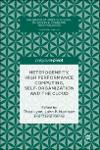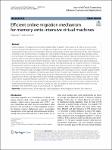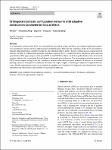Search
Author
- Jorgensen, Ed (3)
- McFadyen, Ron (3)
- Nora, El-Rashidy (3)
- Christian, Homeyer (2)
- next >
Subject
- programming (10)
- Open Access (8)
- Java (7)
- Programming (7)
- next >
Date issued
- 2020 - 2025 (293)
- 2010 - 2019 (39)
- 2000 - 2009 (2)
- 1999 - 1999 (1)
Has File(s)
- true (335)
Search Results
This book presents computer programming as a key method for solving mathematical problems. There are two versions of the book, one for MATLAB and one for Python. The book was inspired by the Springer book TCSE 6: A Primer on Scientific Programming with Python (by Langtangen), but the style is more accessible and concise, in keeping with the needs of engineering students. The book outlines the shortest possible path from no previous experience with programming to a set of skills that allows the students to write simple programs for solving common mathematical problems with numerical methods in engineering and science courses. The emphasis is on generic algorithms, clean design of programs, use of functions, and automatic tests for verification. |
In the design of digital logic circuits, QCA technology is an excellent alternative to CMOS technology. Its advantages over CMOS include low power consumption, fast circuit switching, and nanoscale design. Circuits that convert data between different formats are code converters. Code converters have an essential role in high-performance computing and signal processing. In this paper, first, we proposed a novel QCA structure for the quantum reversible Fredkin gate. Second, we proposed 4-bit and 8-bit QCA binary-to-gray converter and vice versa. For the second proposal, both reversible and irreversible structures are suggested. The proposed structures are scalable up to N bits. To change the conversion type from B2G to G2B, we use a 2:1 QCA multiplexer. The proposed QCA Fredkin is app... |
This book is open access under a CC BY NC ND license. It addresses the most recent developments in cloud computing such as HPC in the Cloud, heterogeneous cloud, self-organising and self-management, and discusses the business implications of cloud computing adoption. Establishing the need for a new architecture for cloud computing, it discusses a novel cloud management and delivery architecture based on the principles of self-organisation and self-management. This focus shifts the deployment and optimisation effort from the consumer to the software stack running on the cloud infrastructure. It also outlines validation challenges and introduces a novel generalised extensible simulation framework to illustrate the effectiveness, performance and scalability of self-organising and self-... |
An essential task of automated machine learning (AutoML
) is the problem of automatically finding the pipeline with the best generalization performance on a given dataset. This problem has been addressed with sophisticated black-box
optimization techniques such as Bayesian optimization, grammar-based genetic algorithms, and tree search algorithms. Most of the current approaches are motivated by the assumption that optimizing the components of a pipeline in isolation may yield sub-optimal results. We present Naive AutoML
, an approach that precisely realizes such an in-isolation optimization of the different components of a pre-defined pipeline scheme. |
Graph coloring is widely used to parallelize scientific applications by identifying subsets of independent tasks that can be executed simultaneously. Graph coloring assigns colors the vertices of a graph, such that no adjacent vertices have the same color. The number of colors used corresponds to the number of parallel steps in a real-world end-application. Therefore, the total runtime of the graph coloring kernel adds to the overall parallel overhead of the real-world end-application, whereas the number of the vertices of each color class determines the number of the independent concurrent tasks of each parallel step, thus affecting the amount of parallelism and hardware resource utilization in the execution of the real-world end-application. |
Wind and solar energy forecasting have become crucial for the inclusion of renewable energy in electrical power systems. Although most works have focused on point prediction, it is currently becoming important to also estimate the forecast uncertainty. With regard to forecasting methods, deep neural networks have shown good performance in many fields. However, the use of these networks for comparative studies of probabilistic forecasts of renewable energies, especially for regional forecasts, has not yet received much attention. The aim of this article is to study the performance of deep networks for estimating multiple conditional quantiles on regional renewable electricity production and compare them with widely used quantile regression methods such as the linear, support vector q... |
Stochastic gradient Markov chain Monte Carlo (SGMCMC) is a popular class of algorithms for scalable Bayesian inference. However, these algorithms include hyperparameters such as step size or batch size that influence the accuracy of estimators based on the obtained posterior samples. As a result, these hyperparameters must be tuned by the practitioner and currently no principled and automated way to tune them exists. Standard Markov chain Monte Carlo tuning methods based on acceptance rates cannot be used for SGMCMC, thus requiring alternative tools and diagnostics. |
Online migration of virtual machines (VMs) is indispensable for system maintenance as it helps to achieve several resource management objectives such as load balancing, proactive fault tolerance, green operation, and resource management of data centers. The migration efficiency and reliability are two major challenges in the online migration of memory write-intensive VMs. For example, pre-copy migration transfers a large amount of data and takes a long time to migrate. This study proposes an efficient and reliable adaptive hybrid migration mechanism for memory write-intensive VMs. |
Orthogonal stochastic configuration networks with adaptive construction parameter for data analytics As a randomized learner model, SCNs are remarkable that the random weights and biases are assigned employing a supervisory mechanism to ensure universal approximation and fast learning. However, the randomness makes SCNs more likely to generate approximate linear correlative nodes that are redundant and low quality, thereby resulting in non-compact network structure. In light of a fundamental principle in machine learning, that is, a model with fewer parameters holds improved generalization. This paper proposes orthogonal SCN, termed OSCN, to filtrate out the low-quality hidden nodes for network structure reduction by incorporating Gram–Schmidt orthogonalization technology. |
Thus, ensuring efficient and reliable data delivery. This paper aims to introduce a Software architecture for Road Network. The architecture is based on fog computing and aims to improve the overall performance in vehicular networks. The proposed architecture is a new routing design for the urban system to accomplish low energy consumption and operational efficiency in data delivery. The integration between the software-defined networks and fog computing platform in the proposed architecture aids to address the high rate of data transmission. Historically, this high rate negatively affected network capacity and power consumption. |










